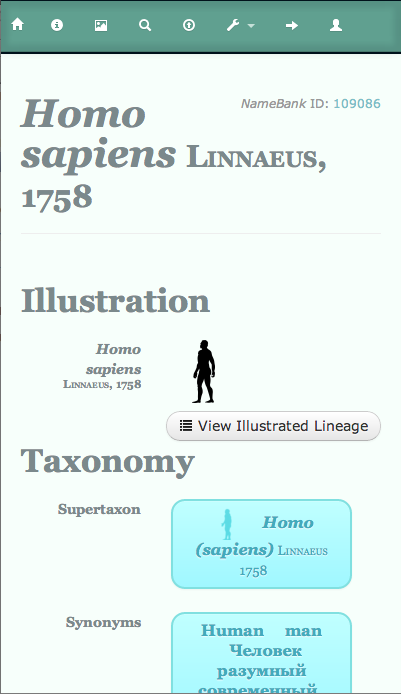On Good Friday I took
PhyloPic down. On Holy Saturday, I wrestled with errors caused by incongruities between the server and dev environments. And, lo, now, on Easter Sunday I announce that
PhyloPic is back!
(Actually, I already announced in on Twitter, but whatever.)
 |
| How smartphone users should see PhyloPic, more or less. |
Major New Features:
- A Developer API (using JSON). Now other people can build applications using PhyloPic data and images. (Yes, I am dogfooding it, so most of it should be pretty well-tested.)
- Responsive design (using the ever-more-ubiquitous Bootstrap) — the site is now much more useable on mobile devices.
- A Links Page, showing off work that uses PhyloPic or features it in some way.
- Speedier load times (in theory, anyway).
- Ranks for Contributors — if you submit one image, you're a "Specialist". Two, and you're a "General". Six, and you're a "Familiar". See where this is going?
- Fewer requirements — most notably, Flash is no longer required to submit images.
- Handy little icons on most taxon links — now you can tell if you're clicking on Gastonia the dicotyledonous plant or Gastonia the dinosaur. (Still rolling this out to all taxa.)



